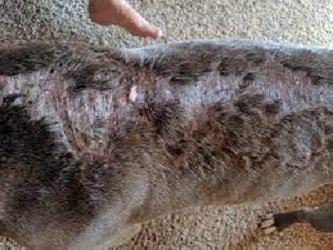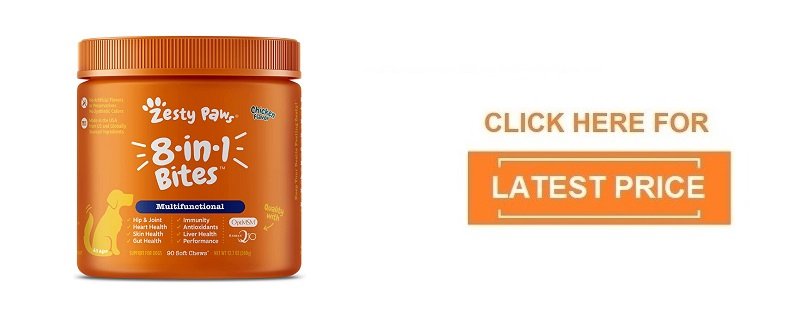If you are a dog owner and you love your dog and shave or cut his whiskers often, then your dog may be facing a risk of ingrown whiskers, bumps, and tumors. Dog whisker is the area we tickle the most.
When we shave ourselves, most of us are aware of the complications shaving can bring, but these complications can also affect your dogs. Ingrown whiskers are one of the most common issues that dog owners face.
If left untreated, the whiskers would become uncomfortable and infected. Therefore, if you love your furry friend read this article until the end and do the best for him:
Do Dogs Have Risk Of Ingrown Whiskers?
YES! Almost all mammals including dogs have whiskers. It develops from the skin pores just around the jaw or mouth. Some of the dog breeds have thick hairs around their head and mouth, so they are more vulnerable to hair gland issues and illnesses.
The danger of ingrown whisker issues, tumors, and ingrown hair is greater in double-coated dog breeds. Remember, the denser the hair around the mouth, the more the danger of ingrown whiskers. Ingrown whisker is an issue that usually comes up after shaving or cutting off their whiskers in dogs. Even though it is not a common issue, it can still be painful for your little friend.
In most situations, diseased whiskers begin as ingrown hair. The majority of the pet owner community is unaware that improper hygiene and a lack of consistent veterinarian treatment might put your pet in danger of having ingrown whiskers.
Some whisker hair cells may stop growing properly forward or out of the epidermis after pet trimming or shaving which is the leading cause of ingrown whiskers. The whiskers twist and keep growing into the skin of the animal.
When natural whiskers struggle to break out of the surface and grow sideways within the skin, this is referred to as an ingrown whisker.
The result of all this mess is a reddish bumpy and itchy area on the dog’s mouth, which makes him uncomfortable to eat, drink and do other stuff.
Causes Of Ingrown Whiskers
Maybe you won’t believe me but shaving and trimming your dog more often and making him bathe regularly are the main reasons why dogs get infected by ingrown whiskers. Even if you shave him often, make sure to not touch his whiskers that often.
Oils, beauty products, dirt, and other factors can block skin pores, preventing hair from growing out of its root.
Rather, it will bend downwards, resulting in ingrown whiskers and cause inconvenience for your dog.
Symptoms Of Ingrown Dog Whiskers
The implanted whisker hair cells can grow into pimple spaces or bumps as they expand, but only if these are infected. To figure out what is wrong, look for the following signs and symptoms:
- Bumpy and itchy skin around the mouth and the whiskers
- Reddish skin
- Pus cysts develop when infected whisker hair glands get diseased.
- Your dog is licking and chewing whiskers area and not stopping
To relieve the discomfort, your dog is likely to begin scratching and biting the whisker area. When this happens, there is a chance of an increase in complications.
Although a reddish or bumpy itching whisker area does not always mean that your dog is suffering from ingrown whiskers, these symptoms can also be caused by:
Folliculitis
Folliculitis is a rare but severe skin disease in dogs. The swelling of hair follicles is referred to as this condition. Small lumps surrounding hair follicles may be the first sign of this problem. They then grow into pus-filled holes surrounding the follicles, which can cause hair loss in tiny places.
Acne or Pimples
Just like humans, dogs can also be infected by acne. It is another issue in dogs that can be confused with ingrown whiskers. In pups, this skin conditions disease affects the nose, mouth, and chin.
Acne pimples in dogs might resemble ingrown whisker lumps in appearance. Your vet can help you determine whether your pet has a hygiene issue or acne.
Worms
Different types of worms with several health complexities can infect dogs. However, almost every worm penetrates the dog’s skin and creates a bumpy and itching area that can be mistaken as ingrown whiskers.
Allergies
Skin irritation, pimples, and rashes like those produced by entrapped hairs can also be produced by an allergy. Urticaria is a skin condition that affects dogs.
The presence of swelling blisters or red pimple-like lumps does not necessarily indicate a problem with the follicles. Rather than treating your pet yourself, we recommend consulting a vet for assistance in assessing and treating the illness.
Ingrown Whisker Cysts and Tumors
In dogs, follicular cysts are liquid-filled holes that form between strands of whisker hair. Itchiness and inflammation cause them to grow.
When the cysts get diseased, they fill with pus, which is a yellow liquid present in infected tissues that may flow if your dog bursts the area. If you believe your dog has an ingrown hair cyst, take him to the vet for preventing the illness from the spread.
Treatment of Ingrown Whiskers
Cotton wool thoroughly soaked in lightly salted water can be used to soothe the damaged whisker area. This relaxes the skin pores, which opens them and heats the skin, allowing the whisker hair to ‘punch’ its way out more easily.
Additionally, this can help in the cleaning and clearing of whisker hair follicles that have been blocked with dirt, keeping hair inside.
Make sure that your dog is not chewing or licking the affected whisker area since this can lead to illness. Antibiotics and frequent washing of the region may be prescribed if the vet is confident that no outside germs or issues are causing the discomfort.
Occasionally, extended courses of 8 weeks or more are required until the issue is resolved.
How To Save Your Dog From Ingrown Whiskers?
Prevention is always better than cure, and this is what you should do with your dog. Ingrown whiskers can be painful and uncomfortable for your little friend so you can follow these methods to save your dog from this issue of ingrown whiskers:
Taking Care Of Hygiene
Make sure that you or your pet keeper takes proper care of your buddy’s hygiene. Brush his hair and whiskers daily and do not forget to remove dead skin cells (also called dog dandruff) from his body and the mouth area. Thoroughly wash his jaw and whisker area when you are bathing him.
Don’t Settle For Cheap
When you go into a super-mart or a beauty shop, you never compromise on quality and you always want the best for you, right? This is exactly how you should treat your dog. Do not settle for substandard or cheap dog-care products like soaps, shampoos, conditioners, or grooming products.
Always purchase the best quality for your friend.
Avoid Over-Bathing
You should definitely give a bath to your dog and take care of his cleanliness and hygiene but don’t give him a bath daily or too often, doing this can cause dry and irritated skin around the mouth and the whole body which can be easy call for ingrown whiskers.


